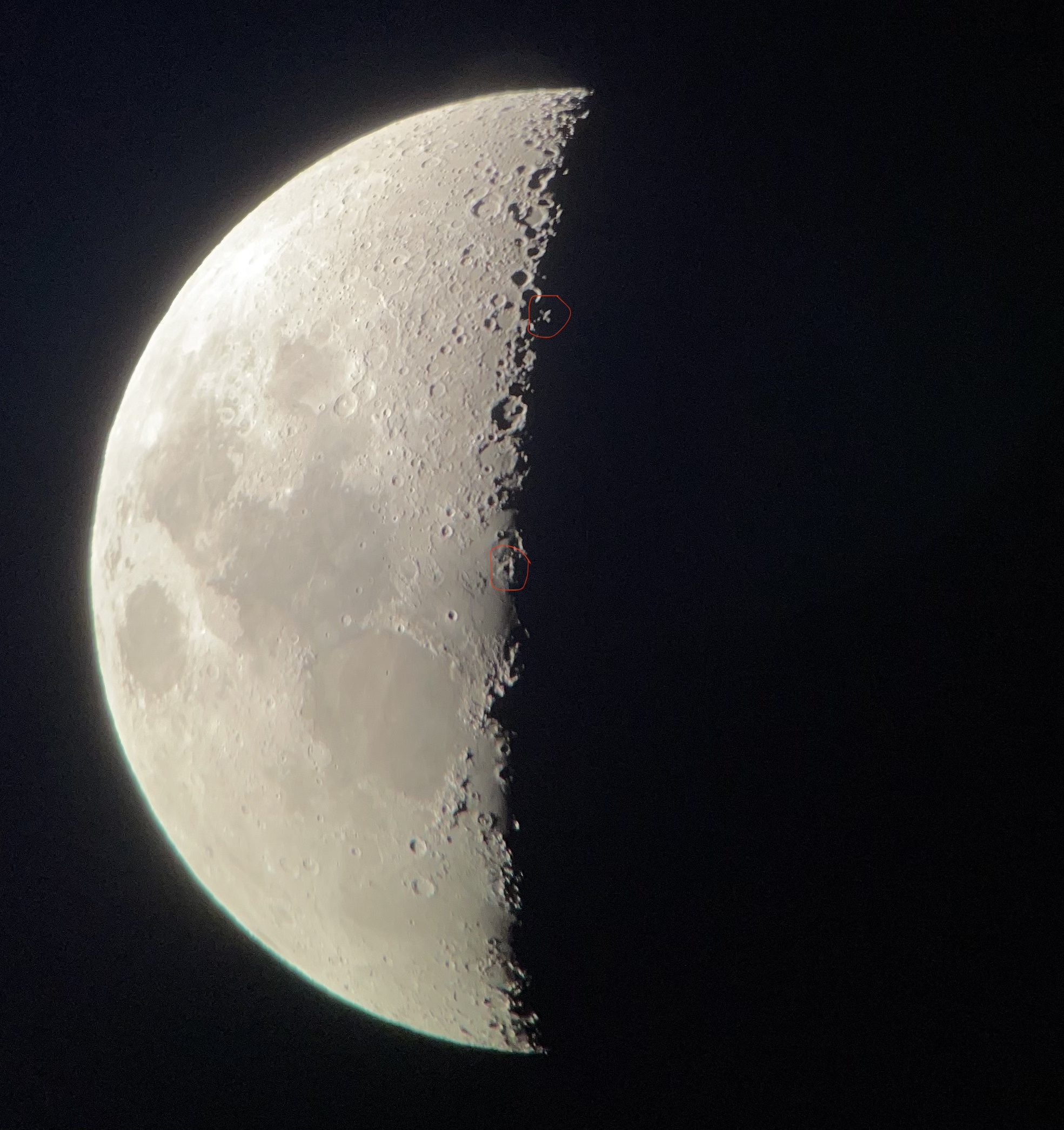Lunar X Predictions for 2024
40°N-75°W, Eastern Time Zone
|
Date, 2024 |
358° Colongitude |
Altitude/Azimuth |
Cloudy Nights |
|
January 18 |
5:15 am |
–37° / 345° |
4:05 am |
|
February 16 |
7:40 pm |
+66° / 236° |
6:49 pm |
|
March 17 |
10:22 am |
–11° / 38° |
10:10 am |
|
April 15 |
11:08 pm |
+43° / 268° |
11:41 pm |
|
May 15 |
11:01 am |
–16° / 53° |
12:13 pm |
|
June 13 |
10:15 pm |
+34° / 244° |
11:49 pm |
|
July 13 |
9:11 am |
–43° / 58° |
10:48 am |
|
August 11 |
8:15 pm |
+24° / 212° |
9:31 pm |
|
September 10 |
7:49 am |
–65° / 65° |
8:29 am |
|
October 9 |
8:12 pm |
+16° / 206° |
8:09 pm |
|
November 8 |
8:33 am |
–49° / 79° |
7:49 am |
|
December 7 |
10:43 pm |
+4° / 253° |
9:36 pm |
Note: The Lunar X is not an instantaneous phenomenon; rather, it appears
and evolves over several hours, so the times above are fundamentally approximate
and serve only as a guide. The ardent observer should look a little early to
catch the initial visible illumination. A less-dramatic Lunar X against a fully
illuminated background can still be seen at least several days later. Because of
the Moon’s nominal 29.5 day synodic period (phase-to-phase), favorable dates for
a given location tend to occur on alternate months (unfavorable dates for
40°N-75°W are shaded gray in this table).
The 358°
colongitude value for the terminator reaching the Lunar X and making it
visible (see this
RASC paper) and the corresponding lunar altitude/azimuth for 40°N-75°W were
determined with WinJUPOS, which is freeware linked from the
WinJUPOS download page.
The Cloudy Nights comparative data, derived by a different method, was presented
in this Cloudy Nights post.
Daylight Saving Time for 2024 begins on March 10 and ends on November 3. The
listed times are EST/EDT as appropriate for the date.
